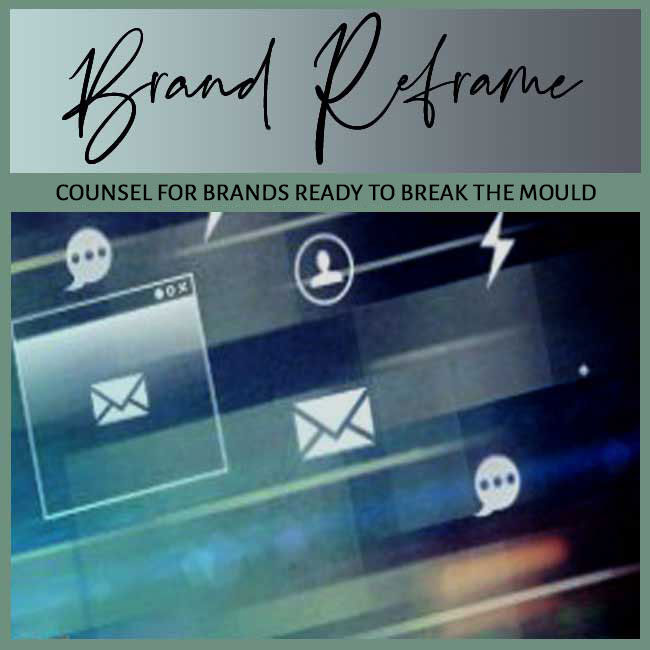
FOCUS: BRAND FOUNDER MISFIT | AUDIENCE: INVESTORS IN SLUGGISH BRANDS
BY: SHOBHA PONNAPPA | BRAND BREAKTHROUGH STRATEGIST | 45 YEARS | 125+ CLIENTS
I answer 6 tough questions about how a brand’s culture can inherit a founder’s old-school biases … and what to do about it.
I often see brands where the founder’s worldview, shaped by a different era, still defines day-to-day behaviours and values. In the beginning, this old-school mindset can offer stability and consistency. But over time, it risks creating friction with modern market expectations. When cultural habits clash with evolving consumer values, the brand’s relevance and appeal can quietly erode.
Founders often set the tone for how a brand thinks, acts, and treats its stakeholders. If their mindset is rooted in outdated norms, these values become embedded in hiring, customer service, and decision-making. This cultural inheritance can feel natural internally but look out of step externally. Over time, the brand operates within an invisible frame that limits its adaptability.
Bias-driven culture also influences which ideas get approved and which are dismissed. Innovation can stall when new thinking feels like a threat to the founder’s way of doing things. Teams may learn to self-censor to avoid conflict, which stifles creativity. The result is a culture that sustains the past instead of creating the future.
Investors want brands that can respond quickly to shifts in market demand. A culture anchored in old-school thinking is often slower to adapt and less open to outside influence. This creates a scalability challenge … not because the product is weak, but because the organisation resists change. Without intervention, these cultural patterns can make the brand sluggish in competitive environments.
From an investor’s perspective, cultural rigidity can be as risky as operational inefficiency. Even with funding, the brand may fail to capture new opportunities if its internal mindset doesn’t shift. This limits growth potential and can reduce valuation at exit. Addressing cultural bias early safeguards both agility and investment returns.
One sign is the persistent use of industry practices that no longer match consumer preferences. Another is resistance to adopting new technology or digital channels, even when competitors gain traction through them. These behaviours are often defended as “proven methods” but can signal cultural stagnation. Over time, they make the brand appear dated or disconnected.
Other indicators include lack of diversity in leadership, rigid hierarchies, and communication styles that feel overly formal or one-way. Such patterns can alienate both younger employees and modern consumers. When recruitment struggles to attract fresh talent, it’s often a sign the culture is out of step. This erosion in human capital directly impacts growth capacity.
Self-awareness begins with honest feedback from trusted peers, advisors, or employees. Founders must be willing to hear how their personal beliefs and preferences influence brand decisions. This requires intellectual humility, acknowledging that what worked before may not work now. An outside perspective can reveal blind spots that internal teams may not feel safe to share.
Regularly benchmarking against market leaders can also highlight cultural gaps. If competitors are succeeding in areas the founder resists exploring, that’s a clear signal. Data on customer behaviour can further show where the brand’s culture is out of sync. This evidence helps shift the discussion from opinion to strategic necessity.
The first step is to redefine the brand’s core values in light of today’s market realities. This doesn’t mean abandoning the founder’s legacy, but reframing it so it supports progress instead of blocking it. Engaging teams in this process ensures that change is embraced, not imposed. Clear articulation of new behaviours and expectations helps them take root.
Next, brands can bring in leadership that complements the founder’s vision with modern perspectives. This diversity in thought ensures the culture is balanced and forward-looking. Training programmes and open forums can bridge generational or mindset gaps. Over time, the culture evolves into a blend of tradition and innovation.
Investors can provide not just funding, but also access to networks that expose the brand to fresh thinking. They can encourage founders to attend industry events or leadership programmes focused on cultural transformation. This external stimulation often sparks the willingness to experiment with new approaches. It also reassures the founder that evolution doesn’t mean erasing identity.
In addition, investors can back initiatives that demonstrate quick wins from cultural change. This might be a new digital campaign, a product refresh, or a partnership that breaks old patterns. Seeing positive results helps overcome resistance and builds momentum for bigger shifts. The result is a more agile, competitive brand with a healthier growth trajectory.
If these signs feel uncomfortably familiar, your brand may be anchored in a mindset that no longer fits the market. That anchor can feel safe but quietly drain competitiveness. The good news? With strategic cultural shifts, you can preserve your heritage while opening space for innovation.
If you’re brand owner or manager seeking stronger brand performance, this FAQ Insight Post I wrote could interest you: “FAQs: When Competitors Copy You and Outperform Your Own Idea.“
And if you’re a solo expert looking to sharpen traction, this FAQ Insight Post I worked on may resonate: “FAQs: When Taglines and Brand Promise Don’t Match Perfectly.“

"One BIG IDEA can turn brand stagnation into unstoppable movement. Spots are limited each week ... book your breakthrough session now."
Shobha Ponnappa
More Breakthrough Ideas … Case Studies & FAQs … from the Brand Founder Misfit Category
Case Studies
FAQ Insights
Smart insights, real-world frameworks, and idea-driven clarity – designed to help brands move.
Get my fortnightly Brand Reframe newsletter. Smart insights, distilled thinking, and focused momentum to help your brand lead.

Get my free AI strategy guide. Smart prompts, sharper briefs, and practical ways to make AI support your brand momentum.

Just fill in the form to join. Get my newsletter and the guide shown alongside, all with several game-changing tips.